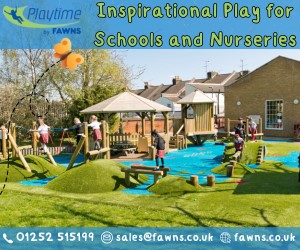We’re living at a time when learning about food – where it comes from, how to cook it well, and how to do so economically – is a pressing matter. Traditional harvest festivals were a celebration of food and the end of the harvest, and were held in late September or October. Produce would be displayed, often alongside symbolic wheat sheaves and corn dollies. Food was brought to the local church to be given to the poor. Revisiting these traditions helps us feel grateful for what we have and supports those in need.
Chaddleworth and Shefford Schools PTFA in Berkshire ran an event called HarvestFest to highlight the local farming community and their work. ‘We sit among fields and countryside, so we wanted to hold a festival that celebrated the rural way of life,’ says PTA chair Caroline Farrant. ‘We held a scarecrow competition alongside HarvestFest to attract attention which caused a buzz among the villagers and guaranteed a good attendance for the event itself.’
‘On the day, we had bands, a local brewery and a barbecue, but to celebrate farmers and educate about food, we also showcased raw ingredients with information about how to use them to make healthy foods. We tried to make it hands-on: we had a “milk-a-cow”, a wooden model that children can use to help them understand how we get milk. A local spinning group showed us how fleece can be used to create wool and, in turn, clothes,’ says Caroline.
Other popular harvest festival activities include games such as apple bobbing and potato sack races, as well as selling food made with seasonal ingredients – an education in itself, as we’re all so used to year-round produce.
In a pickle
Extend your educational activities by running workshops – for example, making preserves with any garden gluts. Charge visitors or request donations to participate, then raise more by selling the resulting goods. Plan for Christmas by making mincemeat, which will sit in the fridge maturing, ready for making mince pies. If you have a baker in your community, ask them to show you how to make nutritious real bread or try making a baked wheat sheaf. Read more about the wheat sheaf and see my own version. Does a crafty person in your community know how to make corn dollies – or could they teach themselves with YouTube? If so, ask them to demonstrate the art or hold a class to teach others. Find a local farmer or food producer to come along and talk about their work or organise a farm visit so the children can see first-hand how their food is grown.
Bank it
Perhaps the most important thing to do is to collect food. Either work with local food banks or get involved with a bigger charity. Set up in 2017, UKHarvest works with schools doing large-scale Harvest Festival food collections, which it redistributes. ‘We primarily rescue food that would otherwise go to waste,’ says Andrew Meredith, communications officer at UKHarvest. ‘We also run a big education and outreach programme with schools.’
Sarah Morison, partnerships officer at UKHarvest, says: ‘At some schools, we deliver a harvest assembly in person to encourage pupils to think about whether or not they waste food. At others, we provide a short film for their assembly about farming and the work that UKHarvest does.’







.gif)



